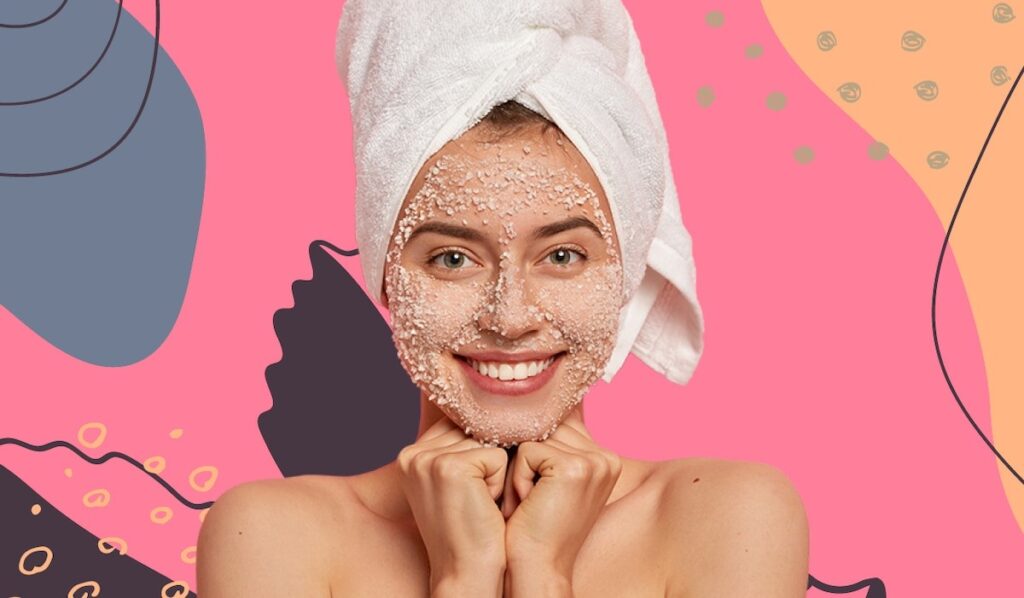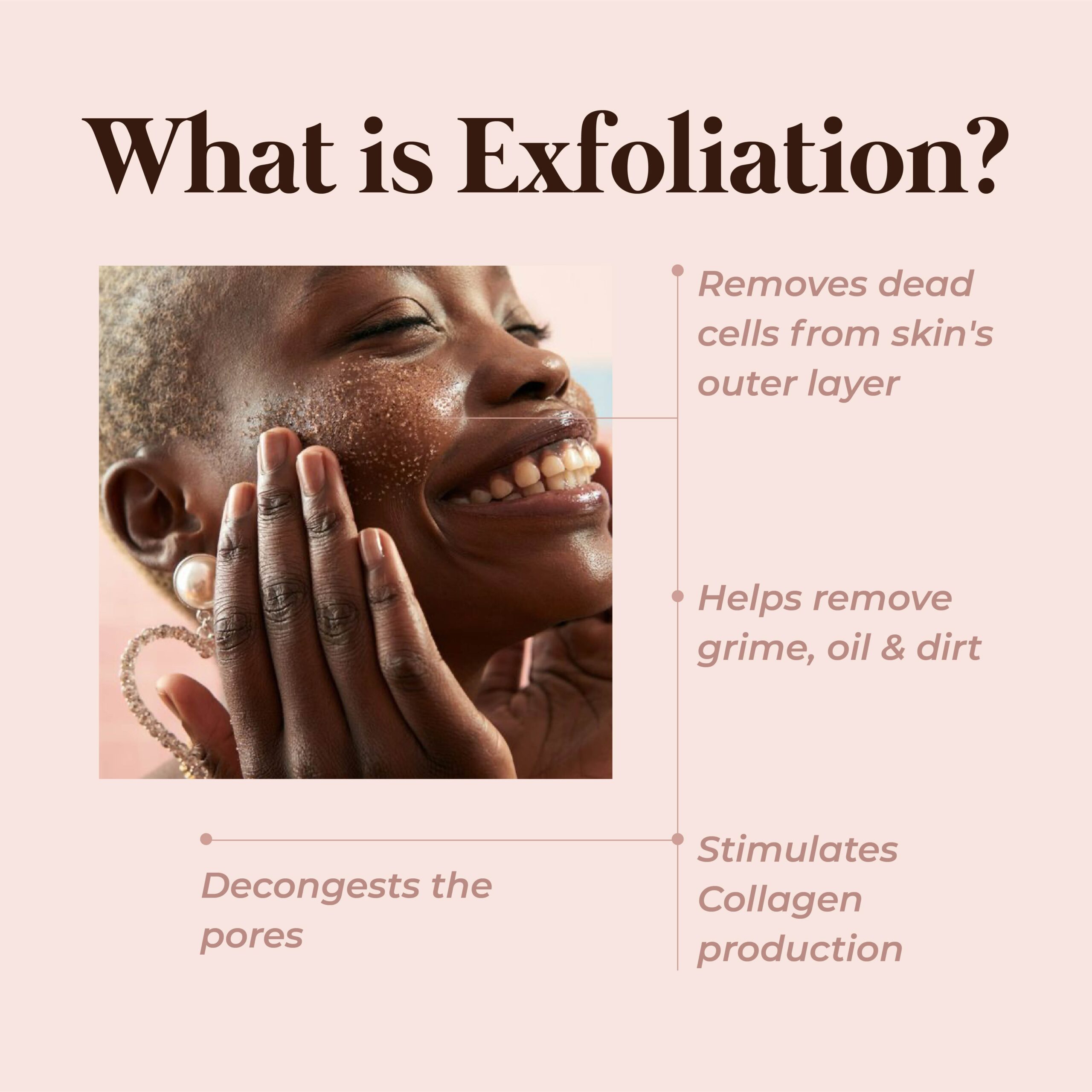
How to Exfoliate Face Safely: Ultimate Guide for Oily, Dry & Combination Skin
Choosing the right exfoliation and adding to your skin care routine, can give you the skin you desire.
Do you want glass skin? How can we get the perfect glass skin? Do you want to have impeccable skin even when your skin is zoomed in? How to exfoliate? So many questions that keep bumping in your mind, it’s time to put them to rest!
With summer almost over and autumn being around the corner, our skin tends to get a bit dry because of the ‘change in the weather’ and if you also feel like your skin is getting dry or dull even after your skincare routine, it may be a sign that you need to EXFOLIATE.
Let’s talk about one of the most important steps in any skin care routine – Exfoliation and what is the right way to do it with so many skinfluencers bragging about it. We’re all different, we all have different kinds of skin so finding the right type of exfoliation for our skin type is ‘super important’ because it will make difference between if your skin is healthy and if it’s not.
What is Exfoliation & Why it is important?
Exfoliation is the process of removing the dead skin cells from the top layer of your skin. It is that one step in any skincare ritual that can take your skin from dull to glowing in a matter of minutes. Your skin is actively producing new skin – it’s what keeps us youthful, it’s what makes sure that your skin isn’t wrinkled or rough or gross looking. It’s the reason why we’re able to grow from babies to the size that we are now. Ha!

Your skin needs a lot of help shedding itself of its own skin. We’re not snakes, are we? We can’t just wriggle out of our old skin; we need a little bit of assistance. And what exfoliation does is that it helps assist us in that process of getting rid of all those dead skin cells that pile up on our skin. In fact, we lose around 30,000 to 40,000 skin cells every hour! If that number astonishes you, then it might make more sense knowing that we have billions of skin cells in total. Next time you dust your window sills or your picture frames, you may be dusting away former pieces of yourself. Sounds icky… but it’s true!
Exfoliation improves the appearance of your skin and provides the following benefits:
- Unclogs pores, improving the release of natural moisturizing oils.
- Removes pigment-containing skin cells to fade age spots.
- Minimizes the appearance of pores and scars in the upper layers of skin.
- Reduces the appearance of fine lines and wrinkles.
- Improves absorption of moisturizers and other skincare products.
- Helps reduce the frequency and severity of breakouts by unclogging pores.
- Improves collagen production to improve skin elasticity.
In this article, we will go over the different kinds of exfoliations and which will be best for your skin type.
Physical Exfoliation

This is the one that people are the most familiar with. Physical exfoliators are usually found within scrubs or anything that is really abrasive that we rub across our face. It’s the feeling of taking something like grainy and rubbing it across our face to get rid of that dead skin.
When it comes to physical exfoliation, size matters. The size of the individual grains that you’re using to exfoliate your face matter a lot. Having grains that are too big can cause a lot of damage within the skin and having grains that are too small cannot do enough for the skin.
Overall, physical exfoliation is recommended only to those people who are extremely oily. The people that after a day can feel the dead skin built up on their face because their skin is producing oil so rapidly. And here’s why – the reason it is recommended only to people with extremely oily skin is that sometimes when their skin is producing so much oil rapidly throughout the day, they need something that could just take it all away. But for any other people with different skin types, physical exfoliation is not something you want to touch.
Dr. Sejal Shah, a dermatologist, says, “I find that people often scrub too aggressively which can be damaging to the skin. Although it sounds harsher than mechanical exfoliation. Chemical exfoliation is actually gentler on the skin because it doesn’t involve scrubbing.”
Words of advice: Do not physical exfoliate if you have any kind of acne or pimple that will only extremely damage your skin. Only use it if your skin is super oily and don’t if your skin is sensitive.
Chemical Exfoliation

Chemical exfoliation proves to be really gentle to the skin. It is extremely effective and prevents a lot more problems than any other exfoliation does. The one reason chemical exfoliation is great is that it is for every skin type. But remember, there are multiple types of chemical exfoliation.
The first type is called the Alpha-hydroxy acids (AHAs). Now you may be thinking, why will I put an acid on my face? And relax, don’t worry it is not the type of acid that burns your skin nor unfortunately is it the kind of acid that you would take to a rave. 🙂 This is a chemical that is naturally formed in your body that helps keep you anti aged, helps keep you hydrated, and youthful. Now AHAs are for every type of skin and there’s a bunch of different kinds like glycolic acid, lactic acid, and citric acid.
AHAs are highly recommended to people with dry skin. It is really hydrating because it is water soluble. Also, it exfoliates the outermost layer which is perfect for dry skin types that needs to secrete out more sebum.
The other type is called the Beta-hydroxy acids (BHAs). Unlike AHA that works to exfoliate the outer layer of your skin, BHA is oil soluble. It will sink deep into your pores to cleanse it and to remove that skin cells and it will also help with inflammation. Beta-hydroxy acid or what it’s commonly known as salicylic acid is great for people who have combination-to-oily skin. What it does is that it works way deeper than any other form of acid into your pores – clears out all the dirt that is inside and tends to make the skin a little bit drier which helps for people who are extremely oily.
A dermatologist called Dr. Engelman said, “Unlike physical exfoliants, overtime, chemical exfoliants smooth, brighten and even out the skin tone because they also stimulate collagen production from up your skin and reduce wrinkles.”
Chemical exfoliants are naturally created in your body to help you keep looking youthful. When you put it on your skin, it stimulates that production. Thereby, killing two birds with one stone – getting rid of your dead skin cells and promoting youth production.
Enzymatic Exfoliation

Enzymes in skincare are derived from fruits like papaya and pineapple and they work by gently dissolving dead skin cells. Enzymatic exfoliation has been proven to be the “most gentle” type of exfoliation. However, to some it is probably not the gentlest type of exfoliation. Here’s why: Enzymatic exfoliators are similar to chemical exfoliators but unlike chemical exfoliation, they eat away at the dead skin cells at a much slower and gentler rate. Something that you’re gonna see over a longer period of time.
Enzymatic exfoliators are usually recommended for sensitive skin but every single type of enzymatic that majority had found tends to be really irritating to the skin. Not because the actual exfoliator itself but because of the other ingredients that products will pair with it.
Recommendation: Do your research and be careful about what you get. However, on the safer side, a chemical exfoliant – maybe a gentler one, a low concentration of glycolic acid because that will do much more for your skin.
Overview: If you have extremely oily skin – physical exfoliant, if you have combination to oily skin – BHAs (or Salicylic acids), and if you have dry to combination to oily – chemical exfoliants like AHAs.
How to Exfoliate Like an Expert
You can bet your sweet life that if there’s a skincare gadget for acne/blemishes/anti-aging, you name it that claims to make your skin as soft as a baby’s while also helping you get rid of all those pesky blackheads, we’ll jump at the chance. Unlike many other skin problems, blackheads aren’t only a concern for people with oily or acne-prone skin. Their surprisingly persistent nature affects all skin types. There’s nothing like crawling into bed at night after some much-needed “me time,” whether you take a few moments every day to pamper yourself or have a defined routine for your at-home self-care rituals. Fortunately, there are some fantastic skincare tools that you can use from the comfort of your own home to address your most troublesome skin conditions.
If there’s one thing we’ve learned from our prior skincare missteps, it’s that adding our all-new Ultrasonic Skin Shovel to your weekly exfoliation routine is one of the best things you can do. Also commonly referred to as skin spatula, ultrasonic skin scrubber is a device that use high-frequency to collect dirt and oil from pores.

So how should you exfoliate? Well, it depends. A good skincare routine isn’t a one-size-fits-all situation, so you should be doing what’s right for your skin type. However, there are a few basic steps to follow.
- Exfoliate your skin with Th Plush Co. Ultrasonic Skin Shovel at night to improve skin restoration while you sleep, but if you use harsh and irritating ingredients like retinol at night, exfoliate in the morning instead.
- Keep an eye for red, irritated skin as well as small pimples. This indicates that you’re exfoliating too much and destroying your skin’s protective barrier, so take a break.
- Always finish by moisturizing your skin. Because your skin can absorb concentrated serums and reparative treatments better now, this is the best time to utilize them.
When & How Often Should You Exfoliate
No worries, we got you! Here’s a checklist that you should know when you should exfoliate.
- Duller skin
- More fine lines
- Dehydrated skin
- Uneven skin tone
- More breakouts
Exfoliation is huge. Everybody wants smooth, soft, silky skin. And to achieve that, exfoliation is part of our routines, but when to and what to do it with is a big question. So, on the whole, exfoliation should be done once or twice a week and should be kept to that. Over-exfoliating, the skin can cause more problems than you originally had. Over-exfoliated skin is probably worse than not exfoliating your skin at all.
*Skincare Tip: Make sure to avoid any exfoliating ingredients after exfoliation if your skin has not recovered yet fully. It is recommended you use soothing ingredients such as Centella Asiatica or Guaiazulene. Also, after exfoliating, make sure to use sunscreen, and if you exfoliate your skin at night time, do remember to use sunscreen in the morning (the day after).
Author: Sinile Kent
